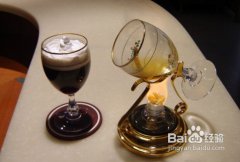Burundi fine coffee beans with excellent acidity

Description of Burundian Coffee characteristic Flavor and Flavor introduction Anchor Point of Variety Grinding degree in producing area by Taste treatment
Burundi coffee was introduced by Belgian colonists in 1930. Unfortunately, many of these farms are on the border with war-torn Rwanda, putting pressure on coffee production.
Coffee producing areas in Burundi:
Coffee in Burundi is now grown only on small farms. Almost all coffee produced in Burundi is Arabian coffee beans, while coffee trees in Ngozi are planted at an altitude of more than 1200 meters.
Features of Burundian coffee:
Burundi has the most diverse and successful coffee industry in the world, and has its own characteristics. Burundian coffee is fragrant and has excellent acidity.
Flavor: mellow taste, rich aroma, excellent acidity
Suggested baking method: medium to deep baking
Burundi coffee was introduced by Belgian colonists in 1930. Unfortunately, many of these farms are on the border with war-torn Rwanda, putting pressure on coffee production.
Coffee producing areas in Burundi:
Coffee in Burundi is now grown only on small farms. Almost all coffee produced in Burundi is Arabian coffee beans, while coffee trees in Ngozi are planted at an altitude of more than 1200 meters.
Features of Burundian coffee:
Burundi has the most diverse and successful coffee industry in the world, and has its own characteristics. Burundian coffee is fragrant and has excellent acidity.
Grinding scale of Burundian Red Bourbon Coffee beans Variety treatment Manor introduction Anchor Point
There are two major ethnic groups in Burundi, and only about 15 percent of the Tutsi have ruled the country since the 16th century, controlling the civilian population, which is mainly made up of Hutu, plus a very small number of indigenous Twa. This abnormal social structure occupied by ethnic minorities planted the evil seed of national instability and reached its peak in October 1993. Just four months after taking office, Melchior Ndadaye, Burundi's first ever Hutu head of state and the first democratically elected president, was assassinated by a mainly Tutsi-controlled military. The death of Ndadaya led to a comprehensive ethnic conflict in which at least 200000 of the population of both sides were slaughtered, of which 65000 Tutsi were slaughtered to fewer than 5000. The massacre lasted until 2002, when the Tutsi government finally signed an international armistice with four different Hutu rebels, and with the last rebel group, the National Liberation Forces (French: Conseil National Pour la D é fense de la D é mocratie-Forces pour la D é fense de la D é mocratie.
Flavor: mellow taste, rich aroma, excellent acidity
Suggested baking method: medium to deep baking
★★: good
The national flag of Burundi is rectangular and the ratio of length to width is 5:3. Two crossed white wide stripes divide the flag into four triangles, the upper and lower two are equal in red, and the left and right two are equal in green. In the center of the flag is a white circle with three red hexagonal stars with green edges in a zigzag arrangement. Red symbolizes the blood of the victims fighting for freedom, green symbolizes the desired progressive cause, and white symbolizes the existence of peace among human beings. The three stars symbolize "unity, labor and progress". At the same time, they also represent the three tribes of Burundi-Hutu, Tutsi and Twa-who live in peace with each other and build their homeland. The Burundian state is a democratic presidential system. On November 1, 2001, the transitional government was established, Buyoya became president for the first 18 months of the transition period, and Ndayizeye, former general secretary of PFDJ and Hutu, served as vice president. On April 30th, according to the Arusha agreement, the transfer of power was carried out smoothly, Ndayizeye took over as president, and Kadege, a Tutsi, became vice president, and the transition period entered the second stage smoothly. In November, the Brazilian government and the largest rebel Forces for the Defence of Democracy (FDD) signed a package of peace agreements, and FDD joined the transitional government, making significant progress in the peace process. From June to August 2005, local, legislative and presidential elections were successfully held. FDD won 63%, 55% and 88% of the seats in the local, national assembly and Senate elections respectively, becoming the ruling party. Its leader Nkurunziza was elected president, took office on August 26th, and then formed a new government. On September 7, 2006, the Brazilian government signed a comprehensive ceasefire agreement with the last rebel National Liberation Front (FNL). However, negotiations on the implementation of the agreement have repeatedly reached an impasse. In April 2008, a large-scale exchange of fire broke out between the two sides. In May, under the active mediation of the international community,
Important Notice :
前街咖啡 FrontStreet Coffee has moved to new addredd:
FrontStreet Coffee Address: 315,Donghua East Road,GuangZhou
Tel:020 38364473
- Prev

A brief introduction to the cultivation of fine coffee beans in Burundi with mellow taste, geographical location, climate and altitude
There are many variables that affect the quality of the final beans. For example, each mountain has a different microclimate, which in turn affects the growth, picking and handling of coffee fruits, and varies from day to day. Nathan James Johnston, the boss of Cartel Coffee Roasters in Australia, said: working with Long Miles, we can make it clear
- Next

Unique flavor of Puerto Rico fine coffee beans Flavor Aroma Description Introduction
The people here have been using an eco-friendly, intensive cultivation method, picking only fully ripe beans and then rinsing them in a roller for 48 hours. Yocote Select coffee beans are kept in sheepskin shells until they are marketed and removed when ordered to ensure optimum freshness. At the time of the transaction, the United States government's relevant
Related
- Detailed explanation of Jadeite planting Land in Panamanian Jadeite Manor introduction to the grading system of Jadeite competitive bidding, Red bid, Green bid and Rose Summer
- Story of Coffee planting in Brenka region of Costa Rica Stonehenge Manor anaerobic heavy honey treatment of flavor mouth
- What's on the barrel of Blue Mountain Coffee beans?
- Can American coffee also pull flowers? How to use hot American style to pull out a good-looking pattern?
- Can you make a cold extract with coffee beans? What is the right proportion for cold-extracted coffee formula?
- Indonesian PWN Gold Mandrine Coffee Origin Features Flavor How to Chong? Mandolin coffee is American.
- A brief introduction to the flavor characteristics of Brazilian yellow bourbon coffee beans
- What is the effect of different water quality on the flavor of cold-extracted coffee? What kind of water is best for brewing coffee?
- Why do you think of Rose Summer whenever you mention Panamanian coffee?
- Introduction to the characteristics of authentic blue mountain coffee bean producing areas? What is the CIB Coffee Authority in Jamaica?

